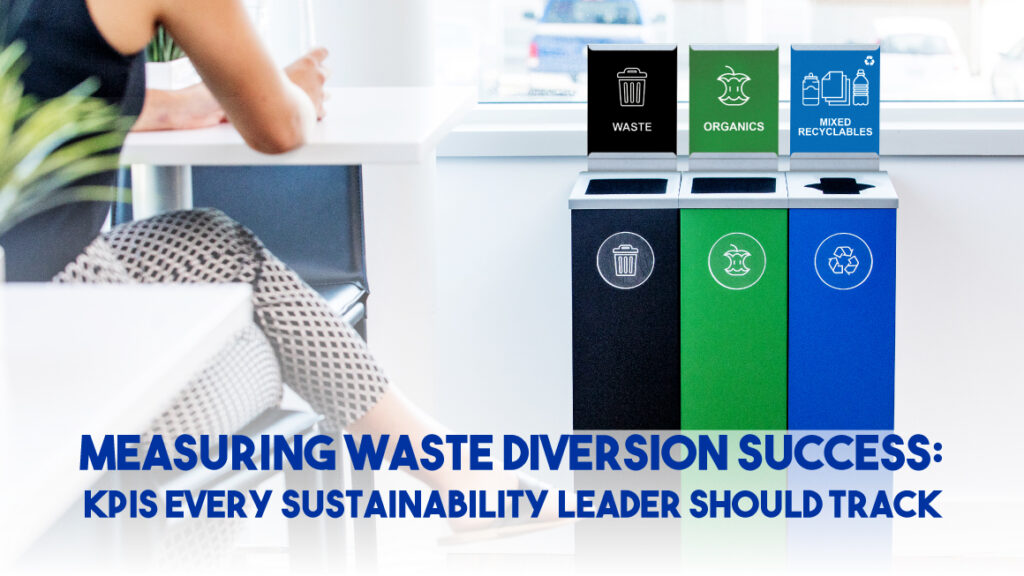The main goals for parks and recreation facilities are to provide appealing, clean, and engaging places for people to gather—and the values of the community are often reflected in these spaces. Clean grounds, visible environmental responsibility, and strong aesthetics significantly improve the visitor experience. This makes developing and implementing a robust waste‑management program a clear priority.
Many municipalities and recreation facilities have already taken steps toward this: adding recycling and organics streams, streamlining systems for ease of use, and educating both staff and guests. Getting buy‑in from everyone makes a big difference. Below are three major categories of benefits that come from a successful program.
Economic Impact
When you look at the budget, introducing—or upgrading—a waste‑management program certainly has costs. But there are clear financial advantages:
- Reduced waste removal costs. Trash‑haul fees can be very high—especially in dense or remote areas. If facilities divert paper, plastic, and other recyclables from the landfill stream, disposal costs can drop significantly—sometimes by as much as 50%. Of course actual savings vary by facility, and recycling collection isn’t completely free—but the overall cost burden can shrink.
- Supports the local economy. Recycling isn’t just good for the environment—it also creates jobs and contributes to state and national economies.
- Value in recycled materials. Some materials recovered through recycling are valuable enough to be sold or reused. This supports circular‑economy goals and can bring in cost‑savings.
- Cleaner facilities reduce maintenance costs. By clearly communicating the waste program and offering suitable receptacles, parks and rec facilities can reduce litter, resulting in fewer demands on janitorial or grounds‑maintenance staff. Better aesthetics often attract more visitors.
Social Impact
Parks and recreation spaces are inherently social—places where communities meet, where people interact, and where shared values are expressed. Implementing a strong waste‑management program supports that social purpose:
- Facilities that prioritize recycling and organics send a strong message: they care about the environment. This resonates with guests and employees.
- By doing so, they empower visitors and staff to take green actions themselves.
- Establishing a “green standard” in public spaces helps build community expectations for responsible behaviour. As one source notes, industries processing recyclable material employ far more people than traditional waste disposal firms.
- Guests are more likely to properly use recycling and waste bins when the environment is clean and intuitive—social norms matter.
Environmental Impact
Every day brings greater urgency to reduce environmental harm. Parks and recreation facilities have a unique public‑facing opportunity to make a difference.
- Recycling helps reduce pollution from landfills. Materials such as plastics can release greenhouse gases and toxic substances when buried. Diverting them reduces those risks.
- Using less raw material: Recycling reduces the need to harvest virgin resources, helping to conserve forests, habitats, and ecosystems.
- Lower energy use: Making products from recycled material often uses significantly less energy than starting from raw resources, reducing strains on natural systems.
- The case for including organics collection is especially strong: sending food or yard waste to landfill doesn’t always lead to clean decomposition—it often produces methane (which is ~20 times more potent than CO₂ as a greenhouse gas) and toxic leachate that threatens soil and water.
- Diverting organics returns nutrients to soil, improves water retention, reduces runoff, and supports healthier land and ecosystems.
- Perhaps most importantly, when a public facility takes visible action, it sets an example—encouraging guests to adopt better behaviour everywhere they go. That ripple effect can influence hundreds or thousands of people.
Key Takeaways (TL;DR)
- A well‑designed waste‑management program in parks and recreation spaces supports three major benefit areas: economic (cost savings and job creation), social (community engagement and norms), and environmental (resource conservation and pollution reduction).
- Economically: Diverting recyclables can lower disposal costs significantly; some materials have resale value; cleaner grounds reduce maintenance burdens.
- Socially: When facilities visibly show commitment to sustainability, it empowers visitors and staff, builds community norms, and supports a more resilient economy.
- Environmentally: Recycling and organics diversion reduce landfill pollution, greenhouse‑gas emissions, and resource extraction; they also restore nutrients to soils and protect ecosystems.
- Importantly: A public facility’s visible actions matter—not just for immediate waste reduction, but for influencing guest behaviour and amplifying positive impact beyond the site.



